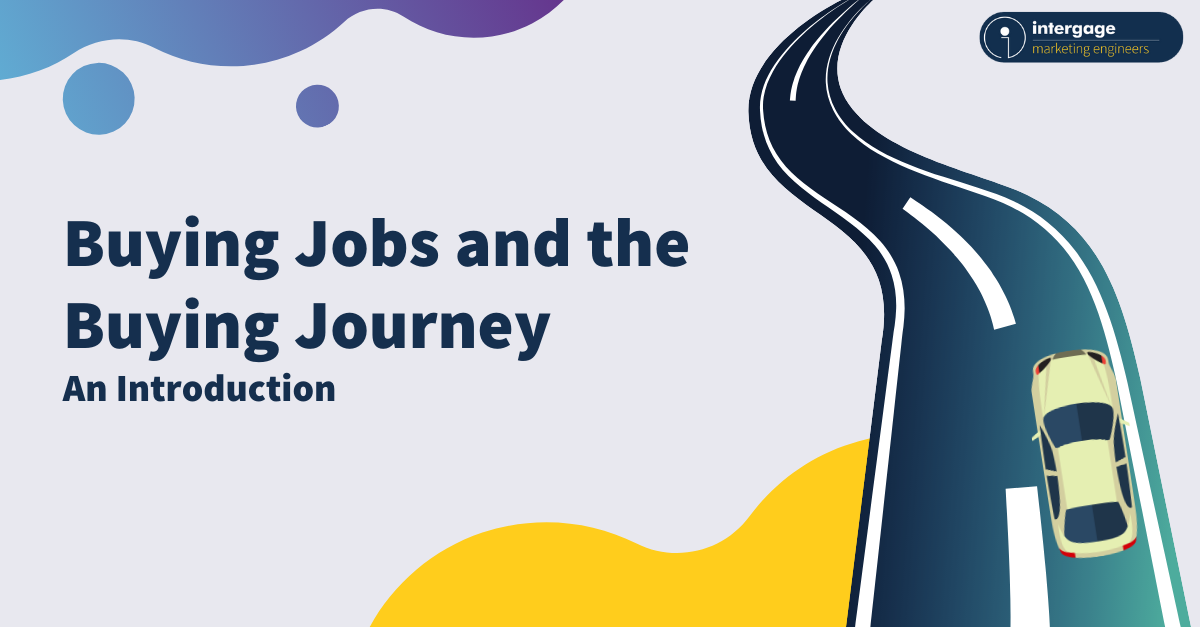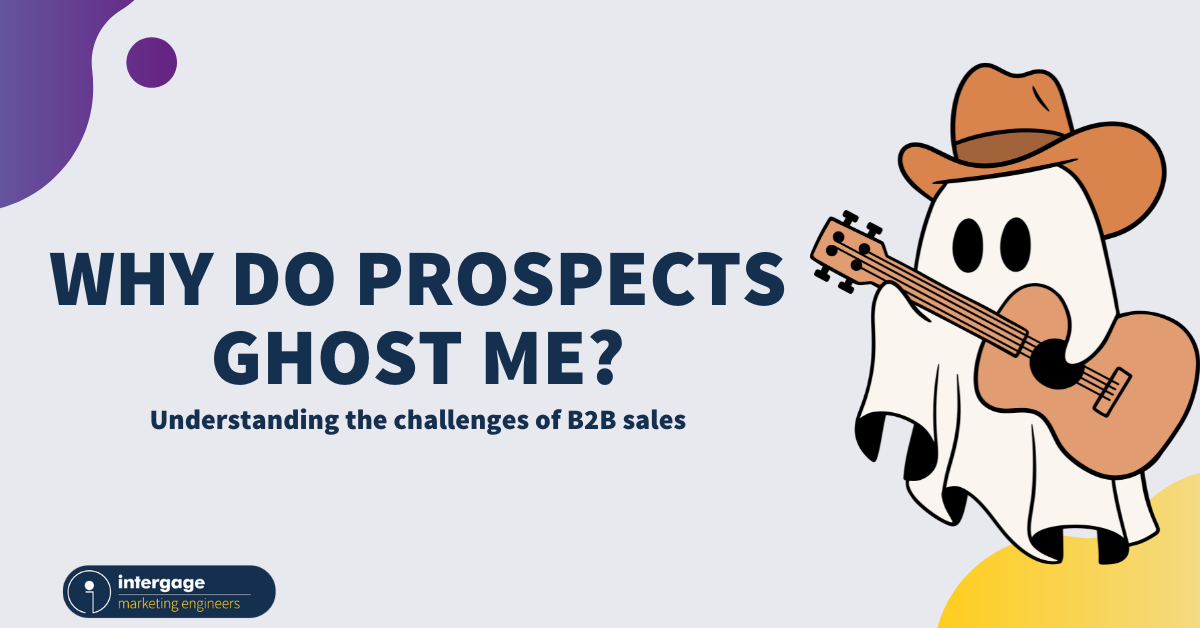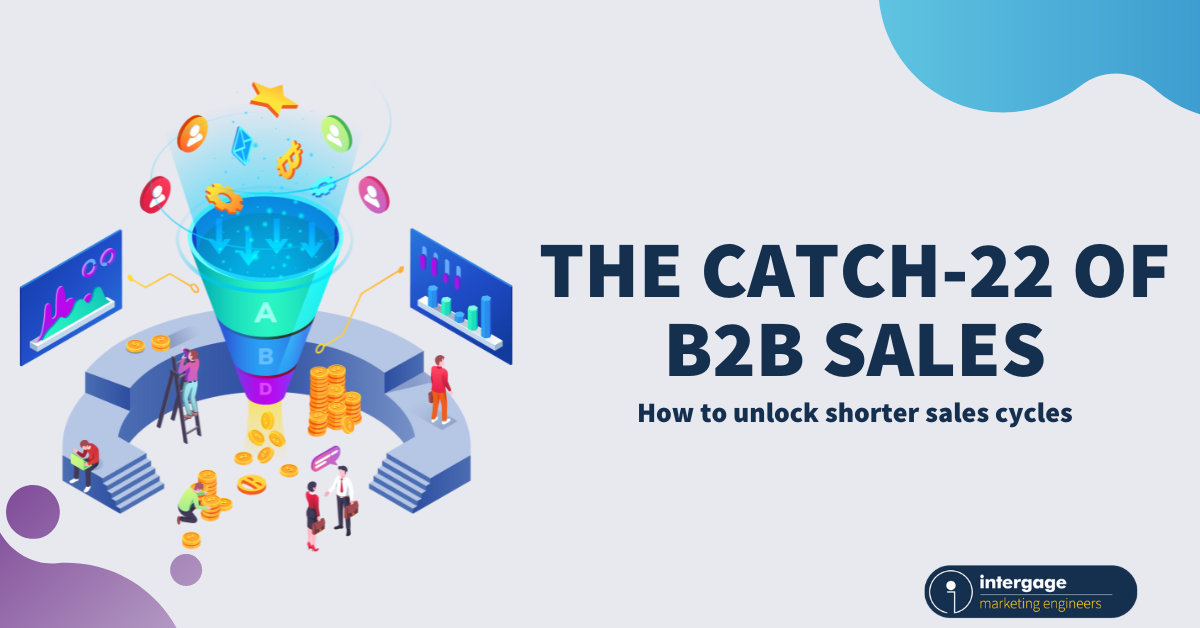9 stats that demonstrate why you can't close deals
If you’re operating in a B2B environment and sell complex products and solutions, the likelihood is you suffer with long sales cycles, deals that constantly move right and a lack of commitment from buyers.
Contrary to popular belief, this isn’t because your salespeople are bad at selling. It’s because the B2B buying process is painful, complex, and unpredictable as we've discussed in our previous article. Here are nine stats that demonstrate why you aren’t closing deals.
80% of purchases now include a complex buying group with 60% of purchases having four or more people scrutinising the decision (Mediafly)
The B2B buying process is an intricate journey that entails multiple layers of complexity. One of the key challenges lies in the significant number of people involved in the decision-making process. These people often come with individual agendas and concerns about a business solution depending on where they fit in the buying committee.
Sellers face the daunting task of navigating through this intricate web of decision-makers, understanding their distinct needs, aligning their value propositions accordingly, and effectively addressing any concerns or objections that may arise.
Unfortunately, closing a deal is no longer as simple as getting one person to sign on the dotted line.
78% of B2B buyers indicate that their top internal decision-making challenge is dealing with multiple stakeholders with different agendas (Mediafly)
The B2B buying process often becomes an arduous journey as buyers grapple with the challenge of reaching a collective decision on business purchases. This struggle primarily stems from the presence of multiple decision-makers, each with their own agendas and priorities.
In many B2B transactions, the decision-making unit comprises individuals from different departments, such as finance, operations, IT, and procurement, among others. Each decision-maker brings their own unique perspectives, goals, and requirements to the table, making it difficult to achieve a consensus. Conflicting interests, varying budget allocations, and diverse functional needs further compound the decision-making process.
Buyers must navigate through intricate internal dynamics, engage in extensive discussions, negotiate compromises, and find common ground to move forward. This inherent complexity prolongs the sales cycle, as sellers need to address each decision-maker's concerns and align their value proposition with the overall organisational objectives, creating tailored solutions that satisfy the collective needs of the decision-making unit.
94% of buyers experienced a cancelled purchase cycle, ending in “no decision” (Gartner)
Buyers no longer suffer with the fear of messing out. They now suffer with the fear of messing up. Unfortunately, this usually means the pain and risk of change is perceived as too high which often leads to abandoned buying decisions.
Lack of consensus is another big reason why buying decisions don’t progress. The involvement of 4+ individuals and their personal agendas can make it next to impossible for a buying group to come to a decision.
Often, buyers won’t even communicate with you to let you know they have decided not to proceed. Instead, you’ll be met with deafening silence as yet another prospect ghosts you.
Sound familiar? Perhaps you’ll be interested in listening to our Lost Sales Anthems playlist to help drown your sorrows.
84% of B2B buyers report that when a buying cycle does culminate in a “Yes” decision, it is taking longer than expected, for many up to two times longer (Gartner)
The protracted nature of the decision-making process can pose significant challenges for sellers, impacting their sales cycles, revenue forecasts, and overall business performance. The unpredictable nature of these delayed sales cycles often means you can’t rely on your pipeline and deals continually move right.
Less than half (47%) of forecasted business ends up being closed (CSO Insights)
The complex nature of B2B sales often results in less than half of the forecasted business being successfully closed. The intricacies of the B2B buying process, involving multiple decision-makers, diverse stakeholders, and lengthy sales cycles, contribute to the challenge of accurately predicting and closing deals. The numerous variables and uncertainties make it difficult for sellers to navigate through the intricate web of organisational dynamics, individual agendas, and competitive landscapes.
Moreover, shifting priorities, budget constraints, and changing market conditions can further impede the closure of anticipated business. Sellers must continuously adapt their strategies, build strong relationships, and diligently address customer concerns to increase the chances of closing deals. Despite these efforts, the complex nature of B2B sales presents an ongoing hurdle, underscoring the importance of resilience, flexibility, and continuous improvement in order to improve forecast accuracy and maximise business success.
64% of surveyed customers cannot tell the difference between one B2B brand’s digital experience and another’s (Gartner)
This challenge arises due to various factors, including the standardisation of user interfaces, the adoption of similar design principles, and the prevalence of industry best practices. As a result, B2B brands often find themselves facing a "sea of sameness" in terms of their digital experiences. Buyers may encounter websites, mobile apps, or online platforms that offer similar functionalities, content structures, and user journeys. This lack of differentiation can make it difficult for buyers to evaluate which brand truly offers a superior digital experience.
67% of buyers prefer not to interact with a sales representative as their primary source of information (Mediafly)
The digital age has transformed the buying landscape, empowering buyers with abundant online resources, research capabilities, and peer reviews. This shift has led to a growing self-service mentality, where buyers seek to gather information independently, make informed decisions, and engage with sales professionals only when necessary. As a result, B2B sellers must adapt their strategies to align with this changing buyer behaviour. They need to invest in robust digital marketing, content creation, and online platforms that provide valuable, educational resources for buyers.
By establishing a strong online presence and delivering relevant, insightful content, sellers can position themselves as trusted authorities in their respective industries. Additionally, sellers should focus on providing exceptional customer experiences when buyers do interact with them, offering personalised guidance, tailored solutions, and superior customer service. By embracing the buyer's preference for self-education while providing a seamless and valuable buying experience, B2B sellers can navigate this challenge and build strong relationships with their customers.
43% of B2B marketing decision-makers report that their companies have lost sales as a consequence of not having necessary content at the right time for a specific customer and 77% of the rest have experienced costly delays (Forbes)
In today's information-driven world, buyers expect timely and relevant content that addresses their specific pain points, educates them about potential solutions, and guides them through the decision-making process. When sellers fail to provide the required content, prospects may become disengaged, lose confidence in the seller's expertise, or turn to competitors who are better equipped to meet their informational needs. This loss of sales opportunities can directly impact revenue and market share.
Moreover, it can harm the seller's reputation and hinder their ability to build long-term relationships with prospects. B2B sellers must recognise the importance of content creation and curation, ensuring they have a robust repository of high-quality, up-to-date materials that can be shared with prospects at each stage of the buyer's journey. By proactively delivering the right content at the right time, sellers can increase their chances of engaging prospects, addressing their concerns, and ultimately closing more deals.
65% of content provided for sales is wasted because sales reps can’t find the content or because the content is perceived as low value or is not relevant to their selling scenarios (Marcom)
With a vast amount of content available across multiple platforms and systems, sales reps may face challenges in locating the right materials at the right moment. This leads to frustration, decreased productivity, and even resorting to outdated or irrelevant content. Moreover, the lack of easy access to relevant content can hinder the sales rep's ability to provide accurate and timely information to prospects, impacting their credibility and rapport.
So, what can you do to combat the challenging B2B landscape?
To truly succeed in today’s B2B buying environment, businesses need to have a complete mindset shift to the way in which they approach sales and marketing. To find out more about how to do this, attend our upcoming workshop: Accelerate Complex Sales & Unlock More Revenue.




